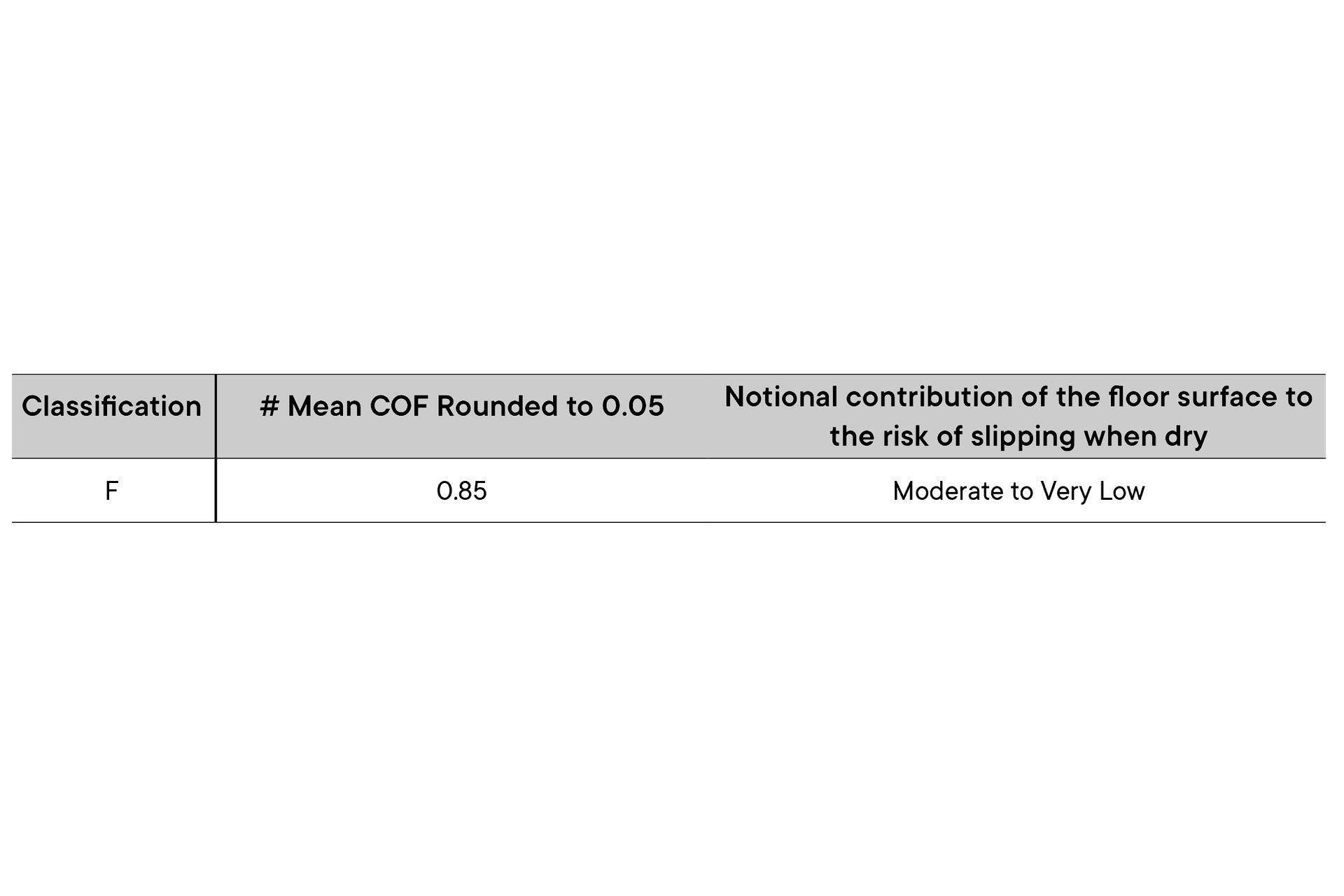Understanding Slip Resistance for Timber flooring

The New Zealand Building code reference to anti-slip requirements is section D – Accessways, specifically D1.3.3. D1/AS1 is the updated publication of Acceptable Solutions to ensure compliance with Section D covers a wider scope than just accessways particularly for commercial situations.
D1/AS1 now refers to both Pendulum testing (SRV not less than 39) as well as Ramp testing which provides an R value (R9, R10, R11). The two testing methods are quite different and the result of one does not corelate to the other. D1/AS1requires that public areas within commercial buildings, wet areas & access routes have slip resistant flooring. A slip resistant flooring is defined as having a surface that gets a Co-efficient of Friction (CoF) reading greater than 0.4 or a Slip resistant value (SRV) of 39 or greater.
For a standalone residential building, D1/AS1 2.1.1 describes access routes which public use as ‘walking surfaces such as decks, patios and steps on the approach to the main entrance to housing and common areas of communal residential and multi-unit dwelling accommodation.’
With the exception of stairs, there is no mandatory slip resistance requirement for floor surfaces within residential individual dwelling units.
The standard referenced in New Zealand for slip ratings for floors is AS/NZ 4586-2013.
AS/NZ 4586-2013 refers to Slip ratings are measured by the ‘Pendulum Test’, which measures the friction between a wet tile and a standard shoe. It ranges from P0 to P5. The higher the number, the lower the risk of slipping.

AS/NZ 4586-2013 also refers to Ramp tests (R values). R values are commonly recognised in New Zealand. R10 will have a SRV greater than 39. Sustainable slip resistance is achieved when the flooring maintains that SRV value over the life it is installed.
AS/NZS 4586 requires 4 tests to be met at a certain level to be classified as a Ramp “value” which are stated as R10, R11, R12. R10 being a minimum slip threshold recognised in New Zealand.


AS/NZ 4586-2013 also refers to Ramp tests (R values). R values are commonly recognised in New Zealand. R10 will have a SRV greater than 39. Sustainable slip resistance is achieved when the flooring maintains that SRV value over the life it is installed.
AS/NZS 4586 requires 4 tests to be met at a certain level to be classified as a Ramp “value” which are stated as R10, R11, R12. R10 being a minimum slip threshold recognised in New Zealand.
AS/NZS 4586-2013 Appendix A Wet Pendulum Slip Resistance Test (the preferred test method for on-site testing)
- Utilises a pendulum friction tester to determine the slip resistance of floor
- Pendulum is fitted with a rubber slider – 4S Simulating a standard rubber shoe sole
- The pendulum arms swings the slider across a floor or sample in both wet and dry conditions
- Readings are taken and referred to as British Pendulum Number (BPN)
The higher the number, the better the slip resistance value (SRV)
AS/NZS 4586-2013 Appendix D Oil/Wet inclined Ramp Slip Resistance Test
- A laboratory test that utilises a tilting ramp.
- Specific viscosity engine oil is used to coat 50cm x 100cm test surface on a tilting ramp
- Specific laboratory rubber soled shoes are worn
- The tester walks upright, backwards, and forwards as the angle of the ramp is increased
- The point at which, a safe limit of walking is reached is recorded
- Performed by two people five times each – then a mean result is determined
- Gives the “R” rating or R10 or R12 measure. The higher the R the better the slip resistance.
Note: Oil simulates contamination other than water often found in for example commercial kitchens
AS/NZS 4586-2013 Appendix C Wet Barefoot Ramp Slip Resistance Test
As per the above oil-wet inclined ramp test except:
- A soapy water solution is used during the test, not oil
- As the name suggests, no shoes are worn by the testing staff, just bare feet
- Used for wet area products
Interpreting Vidaspace ISTS independent slip test results:
- Test results offer two possible outcomes: classification ‘F‘ or classification ‘G‘.

AS/NZS 4586-2013 Appendix C Wet Barefoot Ramp Slip Resistance Test
As per the above oil-wet inclined ramp test except:
- A soapy water solution is used during the test, not oil
- As the name suggests, no shoes are worn by the testing staff, just bare feet
- Used for wet area products
Interpreting Vidaspace ISTS independent slip test results:
- Test results offer two possible outcomes: classification ‘F‘ or classification ‘G‘.
The classification ‘G’ reflects a less slip resistant surface, while the recommended ‘F’ classification reflects a greater slip resistant surface.
Example – Vidaspace Vidaplank

